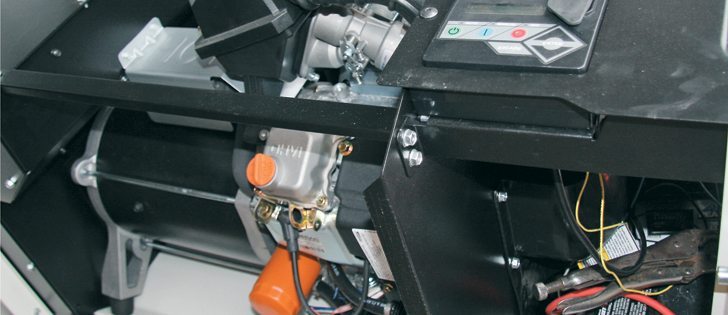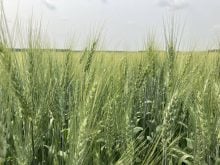Fans and dryers | Automation means propane-fuelled generator requires less monitoring
FARGO, N.D. — The late spring and wet fall have many farmers wishing for electricity to power fans and dryers at their remote bins scattered across the Prairies.
Master electrician Alan Johnson of Glyndon, Minnesota, says producers should consider propane as a viable fuel when buying generators for remote locations.
Johnson displayed one of his On Demand Electrical Power Systems (ODEPS) at the Big Iron Show in Fargo earlier this month.
With 2014 weather conditions on the northern Great Plains similar to those on the Canadian Prairies this year, his propane-fuelled portable generator trailer received attention from farmers coping with tough grain in bins far from the home yard.
Read Also

Volatile temperatures expected for this winter
DTN is forecasting a lot of temperature variability in the Canadian Prairies this winter. Precipitation should be close to average.
However, Johnson didn’t invent ODEPS this year to meet current climatic challenges. He is into his third year selling the units to farmers in North Dakota and Minnesota, and he said economics have been the strongest driving factor.
“The power companies charge farmers whatever they want to charge, but now the power companies are competing against me. They don’t like it because I’m saving my customers a lot of money,” he said with a chuckle.
Johnson said that unlike paying for power from an electric utility company, producers who use a generator pay for electricity only when they operate the unit. The cheaper the fuel, the less they pay. When they’re not producing electricity, they don’t pay anything.
Johnson said his generator uses a high degree of automation, reducing the need for continuous monitoring.
“What I sell is a regular standby propane generator that I modify to sit out in the middle of nowhere and turn on and off as needed,” he said.
“Guys buy On Demand for grain drying fans, livestock watering tanks out in the middle of the grassland range, drain tile sump pumps, nighttime security lighting at distant sites, all kinds of things like that. I can set it up to be triggered by humidity, temperature, float level, sunset, anything. Or it can be triggered by a sensor on an electric motor, just like your electric golf cart. Step down on the pedal and it goes.”
Johnson has mainly built 10 horsepower, three-phase units. He said variable frequency drives on a lot of equipment matches up well with his generators.
Some units are installed in small metal sheds, while others go into trailers.
The trailer generators have the 124 gallon propane tank secured in an air tight closet, which is accessible only through an outside door so that no propane can escape into the generator compartment. The tank holds 100 gallons of propane, which typically runs the unit for 90 to 130 hours of generating time, depending on the workload.
“I start with a Generac propane generator that’s built in Wisconsin,” he said.
“I then modify the control circuitry to meet the needs of each customer. The engine itself is the same, but I change relays, time delays and some other items.”
Farmers considering buying Johnson’s ODEPS should be aware that Canadian regulations governing electrical equipment differs from U.S. regulations.
For more information, contact Alan Johnson at 701-238-1981.
















